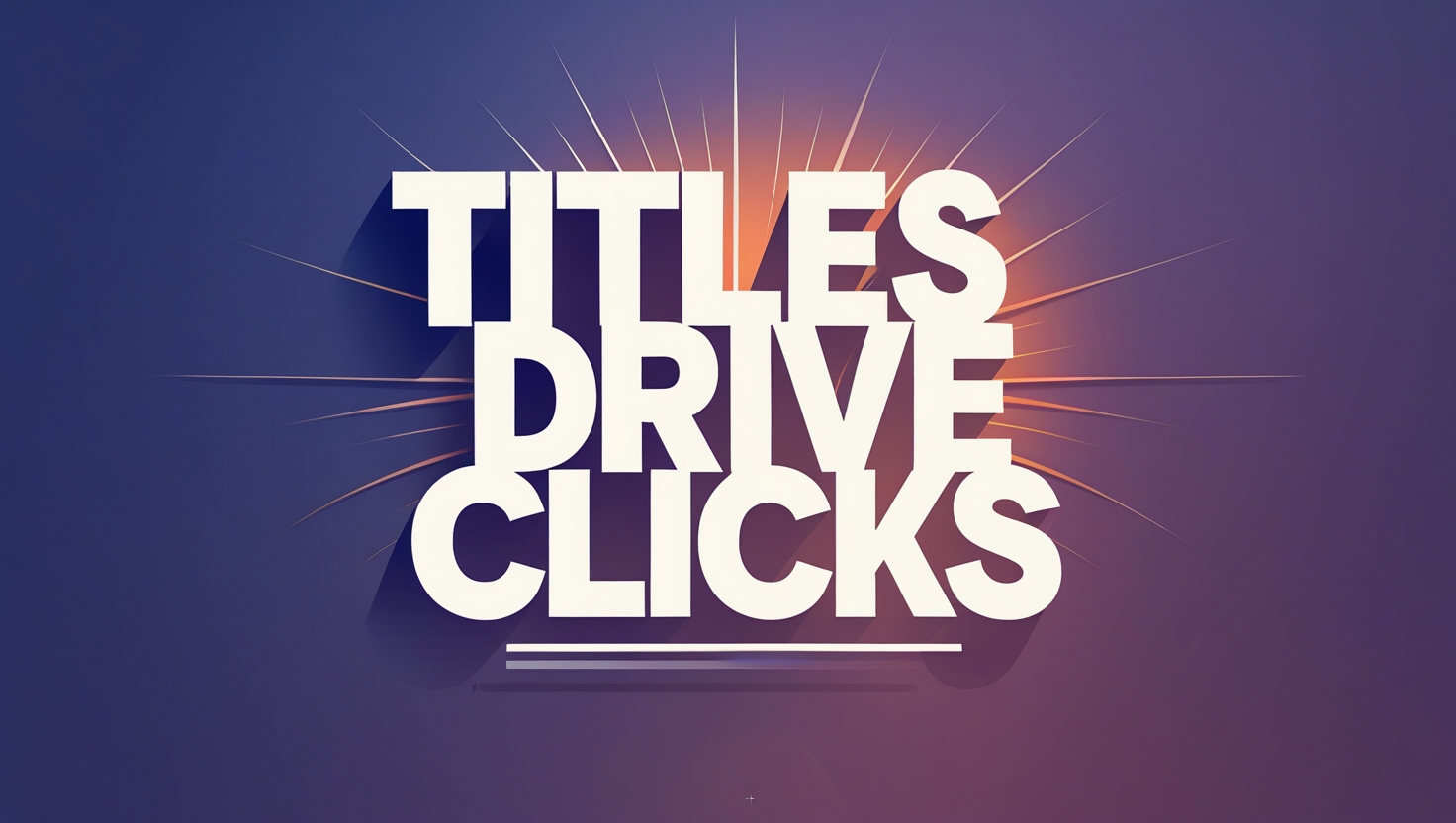11 | Jun
clevpro
11 Jun, 2025
10 Proven SEO Title Hacks That Get Clicks and Boost Traffic

10 Hacks to Create Click‑Worthy SEO Titles That Drive Traffic
Creating a great blog post is only half the battle—crafting a title that entices readers to click is where the magic happens. A headline that’s smart, relevant, and irresistible can make all the difference between a post that spreads and one that fades away. Here are ten hands-on tips to help you write SEO titles that work—and feel genuine.
1. Sprinkle in Real Emotion
Think about what makes you click. Curiosity, surprise, relief, or urgency all work. Try a title like “Feeling stuck? Try this one trick to boost your productivity” instead of something dry like “Productivity Tips”. Emotion pulls readers in.
2. Keep It Honest (No Clickbait)
Readers can smell clickbait from a mile away. A title like “How I Doubled My Sales in 30 Days Without Spending a Dime” sets a clear promise. Deliver on it. If your headline oversells, people feel tricked—and won’t stick around.
3. Use Numbers—but Make Them Matter
Lists work because they show structure: “5 Easy Steps to…” or “7 Common Mistakes You’re Probably Making”. But don’t just pick a round number—make sure each item is valuable. It keeps the title meaningful, not hollow.
4. Keyword, Placed Smartly
Your headline should include your main keyword, but it should read naturally. Instead of “SEO Tips for Blogs”, try “How to Write SEO Titles That Get Clicked”. The keyword’s there—you just wrapped it in a helpful phrase.
5. Keep It Scannable
Most readers skim—especially on social media or search results. Aim for 50–60 characters so your title doesn’t get cut off in Google. Make sure each word earns its place. If it doesn’t add value, drop it.
6. Offer a Solution or a Benefit
A strong title answers the question: “What’s in it for me?” Instead of “Using Email Funnels”, try “Use This Email Funnel to Gain 20% More Open Rates”. You’re telling readers what benefit they’ll get upfront.
7. Ask a Good Question
Questions can be compelling. “Struggling to Write Titles That Convert?” implies the reader might be, and they’ll click to find answers. Questions invite engagement, especially when they resonate.
8. Add a Little Hook or Tease
A hint of suspense can go a long way. “The Surprising Reason Your Blog Posts Aren’t Ranking” teases an unexpected insight. The key is to tease honestly—you don’t want disappointed readers.
9. A/B Test What You Can
If you’re sending blog links via email or posting on social media, try two different titles and see which one gets more clicks. Tools like Mailchimp or your own testing suite can give quick feedback—so you learn what resonates best.
10. Update Titles as You Learn
Your first headline isn’t set in stone. Dive into Google Analytics after a month or two. If a post isn’t getting clicks, tweak the title with what you’ve learned: stronger emotion, clearer benefit, or smarter keyword placement.
Final Thoughts
Writing click-worthy titles isn’t about tricking people—it’s about understanding what truly matters to your readers. The best headlines are honest, benefit-driven, and emotionally resonant. Try out different styles, see what sticks, and keep refining your craft. Over time, you’ll develop a natural knack for titles that click—literally.







